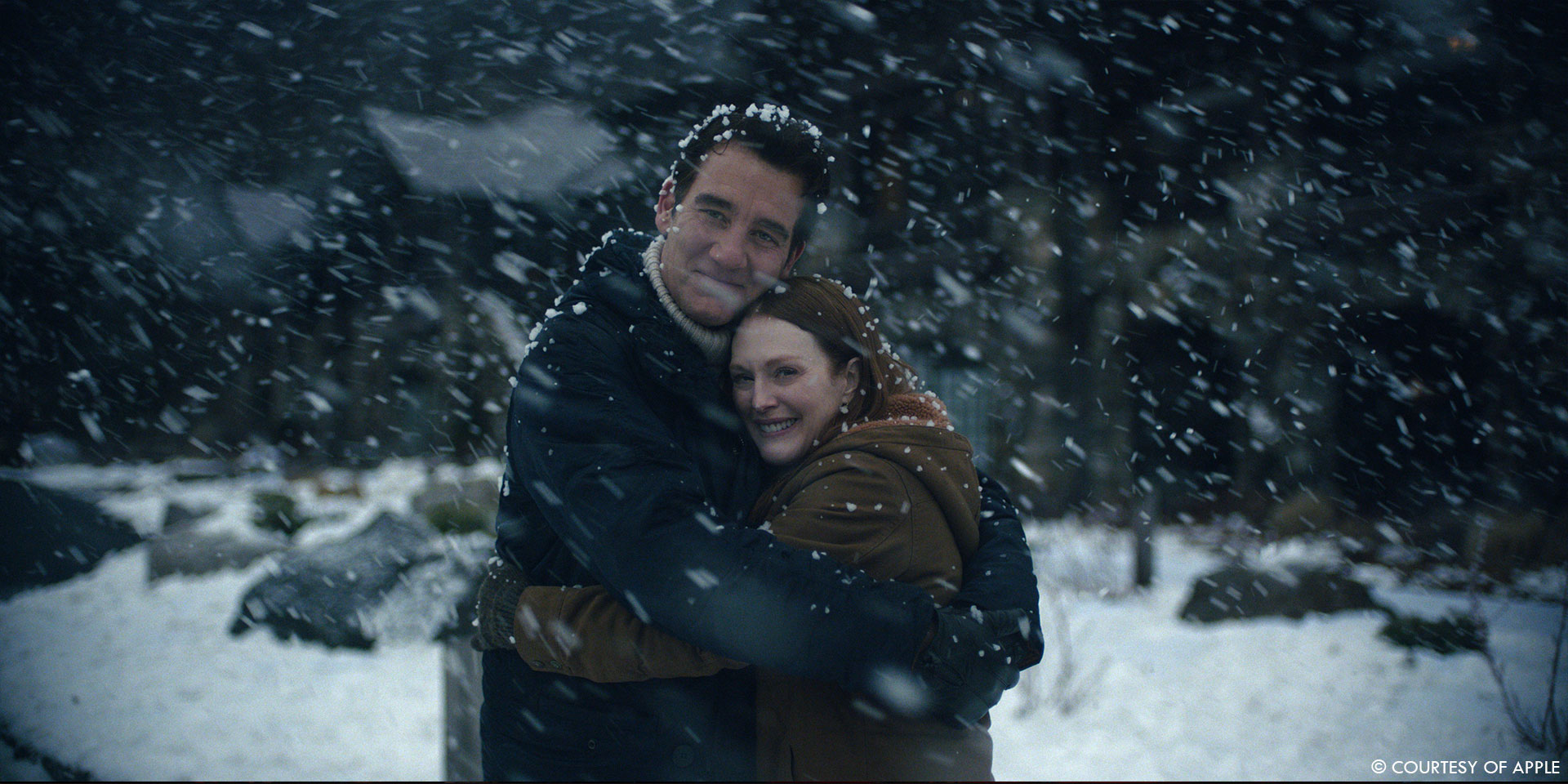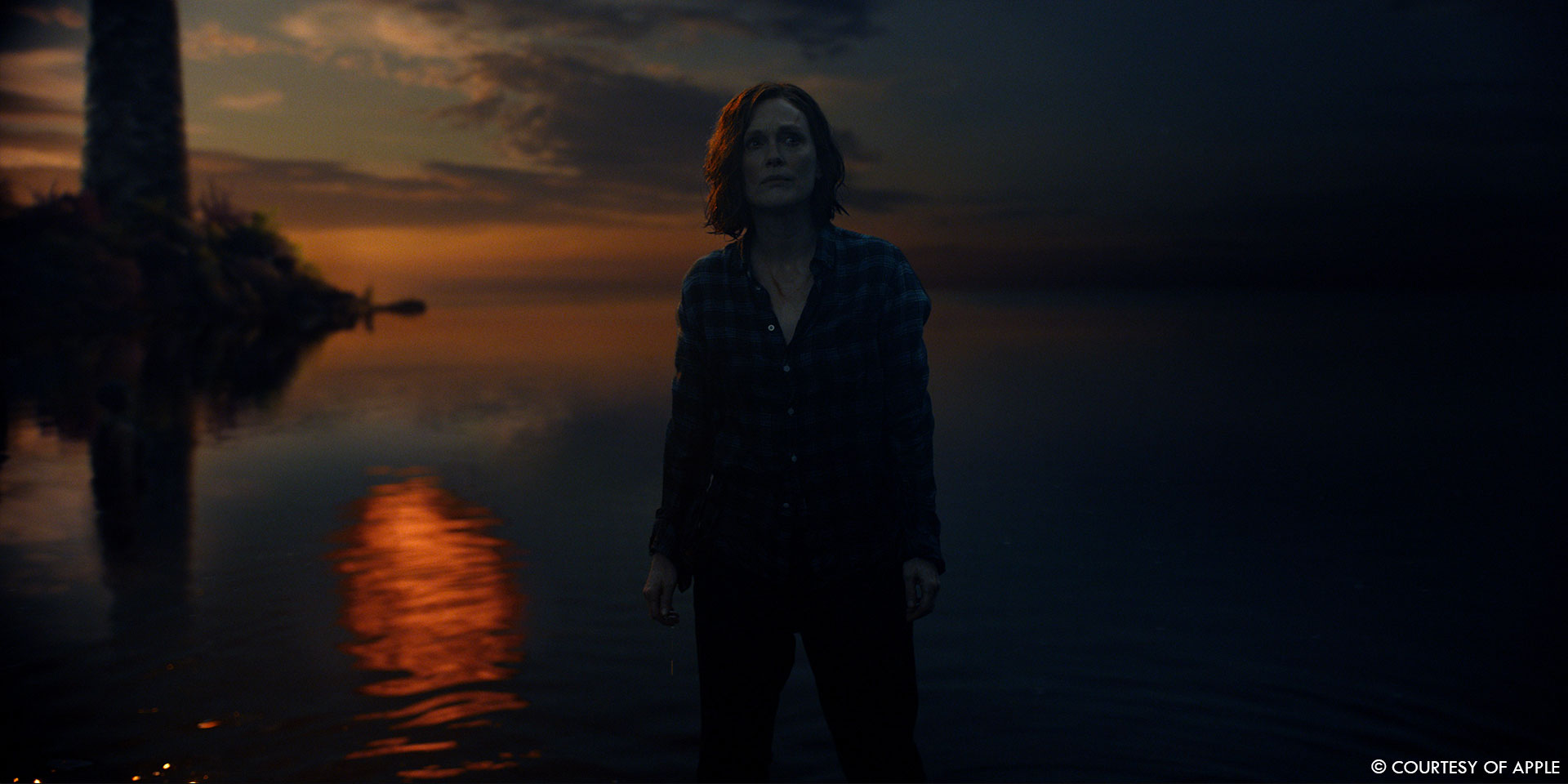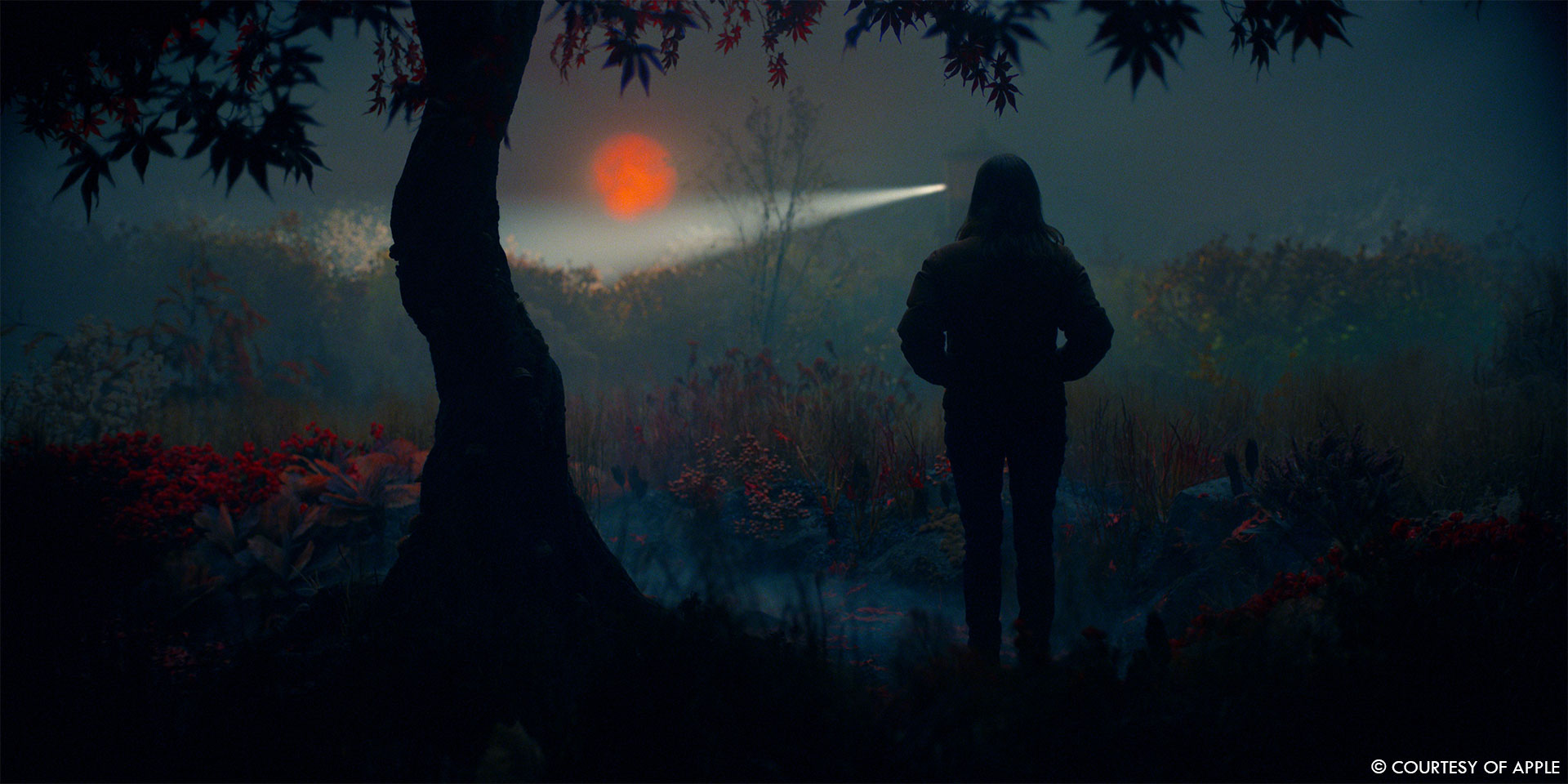In 2016, Pauline Duvall told us about her work on Deadpool! She then worked on many films such as 10 Cloverfield Lane, Star Trek Beyond, Overlord and Star Wars: Episode IX – The Rise of Skywalker.
How did you get involved on this show?
Stefano Trivelli and I were approached by Bad Robot to consult on the show prior to preproduction, and we just really hit it off with director Pablo Larraín so we stayed on to supervise the project.
How was the collaboration with Director Pablo Larraín?
Pablo was such a generous and trusting collaborator. He would often tell us stories or describe the feelings he wanted to convey and we’d interpret those emotions into the look and tone of our work.
What was your feeling to enter the Stephen King universe?
What an honor it was to have the opportunity to create within his universe. I’m such a big fan of his work, and this story gave us such a big sandbox to play in.
What was his approach and expectations about the visual effects?
Stephen really gave Pablo the space to visually interpret his written work. From the beginning, we wanted to keep the look as grounded as possible for the real world scenes. In contrast, we could be more surreal and magical while we were in Boo’ya Moon.

How did you organize the work with your VFX Producer and VFX Supervisor Stefano Trivelli?
Stefano and I were both involved in planning and designing the sequences, while Serge Riou our VFX Producer managed our budget and schedule. We decided to organize the larger CG builds based on location. We also had a lot of flashbacks in this series, so Serge was also meticulously tracking all the time jumps and ages for our rejuvenation work. While we were shooting, Serge and I were onset in New York with our team. Once we were heavily into post Serge and I took the show to the finish line.
How did you work with the art department to create the “parallel world”?
Our goal was always to get as much in camera as possible, but with how expansive Boo’ya Moon was we obviously had a big role to play. So prior to building the sets for the pool and the forest, we came together with the Production Designer and DP to discuss what would make the most sense to be built practically versus create with visual effects. Sometimes that meant the shape of the sets would require additional VFX extensions due to the needs of the camera department to fit a Technocrane, and other times it meant asking to remove trees and flora because it would not be ideal for us during post. The art department also shared so much of their reference materials with us so we were all on the same page with the aesthetic we were shooting for. It was a good collaboration to really get the best result from all teams.

Can you elaborates about the creation of this mysterious and disturbing world?
Boo’ya Moon was a place where physical pain and mental trauma co-exists with healing and beauty. Pablo also wanted it to be poetic and mysterious, so the tone was very clear. The art department created beautiful concepts and mood boards so we always had a wonderful touchstone.
Mohsen Mousavi and the Scanline VFX team created a considerable extension to the forest, which is also where the massive tortured Longboy creature lived. We mapped out the geography of Boo’ya Moon and knew exactly where the Longboy’s paths were, and where the forest was relative to the moon and pool. We captured a lidar scan of the forest set, and Scanline built a library of plant and tree assets that matched into our production design. Scanline took on the huge task of creating the Longboy which is made up of hundreds of decomposing bodies. It was quite a technical feat.
Julien Bolbach and the team at MPC created the pool set which included the amphitheater populated with people, an infinite body of water and a 3 mast wooden schooner. The team built a version of the set in Unreal Engine in order to previs a full CG sequence. It was great to have that fast iterative process and also very helpful for editorial to have something to cut in. We also knew we needed to make a distinct and diverse group of digital extras, so we started with referencing snapshots from the costume department. Once we created our digital extra assets, we’d then go back to the Costume Designer for any final tweaks. We also created the lovely schooner in the pool. While we did have a partial boat on-set for the little girls to interact with, the team seamlessly extended the sails and hull of the boat.

Can you tell us more about the bay environment with the boat and the beautiful moon?
We had quite a journey with the Boo’ya Moon pool. It was a massive set piece that was built on a stage in New York. Darius Khondji our DP, prelit it on March 12, 2020 and we were all so excited to shoot it the following day. The next morning was when our production shut down due to COVID. It was devastating, but the production and crew were amazing and safety returned in September to complete shooting.
The pool environment was such a magical place to create. In the story, it was a different experience for each individual there, so we had to convey that it was a place for physical and spiritual healing while for others it was a purgatory of sorts. It had to be mysterious, surreal, eerie and beautiful all at the same time. While we had a beautiful set and cinematography at the base, we had a lot of fun creating the vastness of that world. MPC did a excellent job creating and seamlessly integrating extensions to the amphitheater as well as blending from the practical water on set to create a bay that went off into infinity. For many of the shots, the water was completely replace because of reflections from set lights and we also wanted control of the speed and amplitude of the waves.
The moon and lighthouse in particular were very important to Pablo. Both elements kept everything connected between the pool, the forest, and even when Scott (Clive Owen) and Dooley (Dane DeHaan) were hypnotized. The moon in particular was warm and golden for most of the series, until Dooley arrived at which point it turned cold and blue.

Water is an important element in the series. How did you manage the FX work for it and especially when it comes out of Clive Owen?
Water was definitely an important element in the series. You’ll notice that even the design of the forest was made to feel like we were underwater. Water served as a tool to transition to Boo’ya Moon, to heal, while at other times it meant death. So we had to make sure we had distinct looks for each.
Scanline managed the water in the real world. We created an uncontrollable violent stream of water being regurgitated from Scott Landon (Clive Owen) as he became very ill. We started with the idea of the pressure from a strong garden hose and dialed back from there. In contrast we had a more gentle stream of water transferring between Lisey (Julianne Moore) and Amanda (Joan Allen), as well as Scott and Amanda when it served as a healing source.
Can you explain in detail about the design and the creation of the terrifying big guy in the parallel world?
It started with an image that Pablo sent to us of a huge hand coming out of the mist. He loved the scale and mystery. He never wanted the Longboy to be a traditional monster. The audience had to be able to see his pain with every motion, and to also feel empathy for him. The production designer came up with the initial design. It was a massive creature made up of hundreds of human souls. The Longboy was 19’ tall from hip to head, that crawled on his belly propelled by only his arms.
We took that initial design and flushed it out with a concept artist who built a 3d digital model for us. Scanline then took all of this information and created the high resolution model and began doing an array of motion tests.

What kind of references and influences did you received for it?
We looked a lot of different references, but we alway came back to artwork from Zdzis?aw Beksi?ski and Auguste Rodin’s “The Gates of Hell”.
The body is composed of countless number of people. How did you handle the animation challenges?
Mohsen and the team from Scanline came up with a procedural system to populate the Longboy form, and then applied animation cycles to keep them in constant motion. We would then be able to go in after and make specific alterations to individual bodies as needed. They also created a system where we see tension where the bodies joined the main Longboy form. One of the bigger challenges was dealing with interpenetration of the bodies. Scanline had a team of artists to help manage this.
How does his massive size affect your animation and lighting work?
We were definitely very conscious of the Longboy’s exceptionally large size. The team at Scanline did their own motion capture for the moments when he dragged himself through the forest. We decided to retime it in order to slow it down, and think it ended up being quite affective to show his massive weight and scale. The challenge with lighting the Longboy was less about his scale but more about how complex his form was. Since he was made up of hundreds of human bodies it could have become too visually busy, but Mohsen and his team were really able to walk that fine line.

Can you elaborates about the terrible death of Dane DeHaan?
That was actually a really fun collaboration with our stunts team. I was describing the Longboy to them and how it moved and we were bouncing ideas off each other about how we could create an appropriate death for Dooley. We all agreed on an idea and pitched it to Pablo. He thought it was crazy and a horrible way to die…so he let us do it!
In the series, the Longboy toyed with Dooley at first, and proceeded to pick him up and throw him down. He then pick Dooley up again and presented him to Lisey as if it were a prize. The bodies on the hand of the Longboy tore and grasped at Dooley until they finally ripped him limb from limb. Scanline created this gruesome sequence. It involved transitioning from Dooley in the filmed plate to a digital double, and also dismembering him.
The series is really gore. How did you enhance this aspect?
The Makeup FX team was amazing so we were able to get a lot of the gore in camera, however we did handled most of the shots you see of the actors being cut, shot, or if it involved flying blood.
Can you explain in detail about the rejuvenation work?
It was always the idea that we did varying degrees of rejuvenation rather than drastic de-aging. We had a very talented and meticulous team who handled all of that work and kept it all looking very natural.
What was the main challenges with the rejuvenation shots?
The shot lengths were the main challenge for the rejuvenation work.

Did you want to reveal any invisible effects?
Most of the snow shots had heavy set extensions that were done by Rise and MPC. The weather didn’t cooperate with us so we only had snow directly under where the actors or cars were contacting the ground.
We also had a full CG shrouded Scott in the final episode before he disappears into the pool.
How did you split the work amongst the vendors?
Scanline created the forest, the Longboy, and real world water FX.
MPC produced the pool environment, and snow environments.
Rise handled that laundromat sequence, snow environments, and rejuvenation
BOT worked on rejuvenation, hypnotized eyes, and all of our paint work.

How was the collaboration with their VFX Supervisors?
We were very lucky to have a phenomenal team of supervisors to work with. We were all very collaborative and really did an exception job, particularly working throughout the pandemic. I am so grateful to them and their amazing teams for all the contributions and hard work.
Is there something specific that gives you some really short nights?
What gave me pause, were those days after we shut down due to COVID. First and foremost, we were concerned about the safety of our crews and their families.
What is your best memory on this show?
Working with a fantastic group of creators and artists who were all so generous and creative is my best memory. Working throughout the pandemic must not have been easy, but everyone really put their best foot forward and helped us create some magic.

How long have you worked on this show?
I’ve worked on this show for about 1.5 years
What’s the VFX shots count?
We landed at just over 1400 shots
If it’s not a secret, are you already busy on a new show?
I work for Bad Robot, so I’m currently helping to prep our upcoming slate of shows.
// Lisey’s Story — Making Boo’ya Moon Real
A big thanks for your time.
WANT TO KNOW MORE?
RISE: Dedicated page about Lisey’s Story on RISE website.
Apple TV+: You can now watch Lisey’s Story on Apple TV+.
© Vincent Frei – The Art of VFX – 2021




